

An Honest Doctor’s Guide to Treating Pigmentation
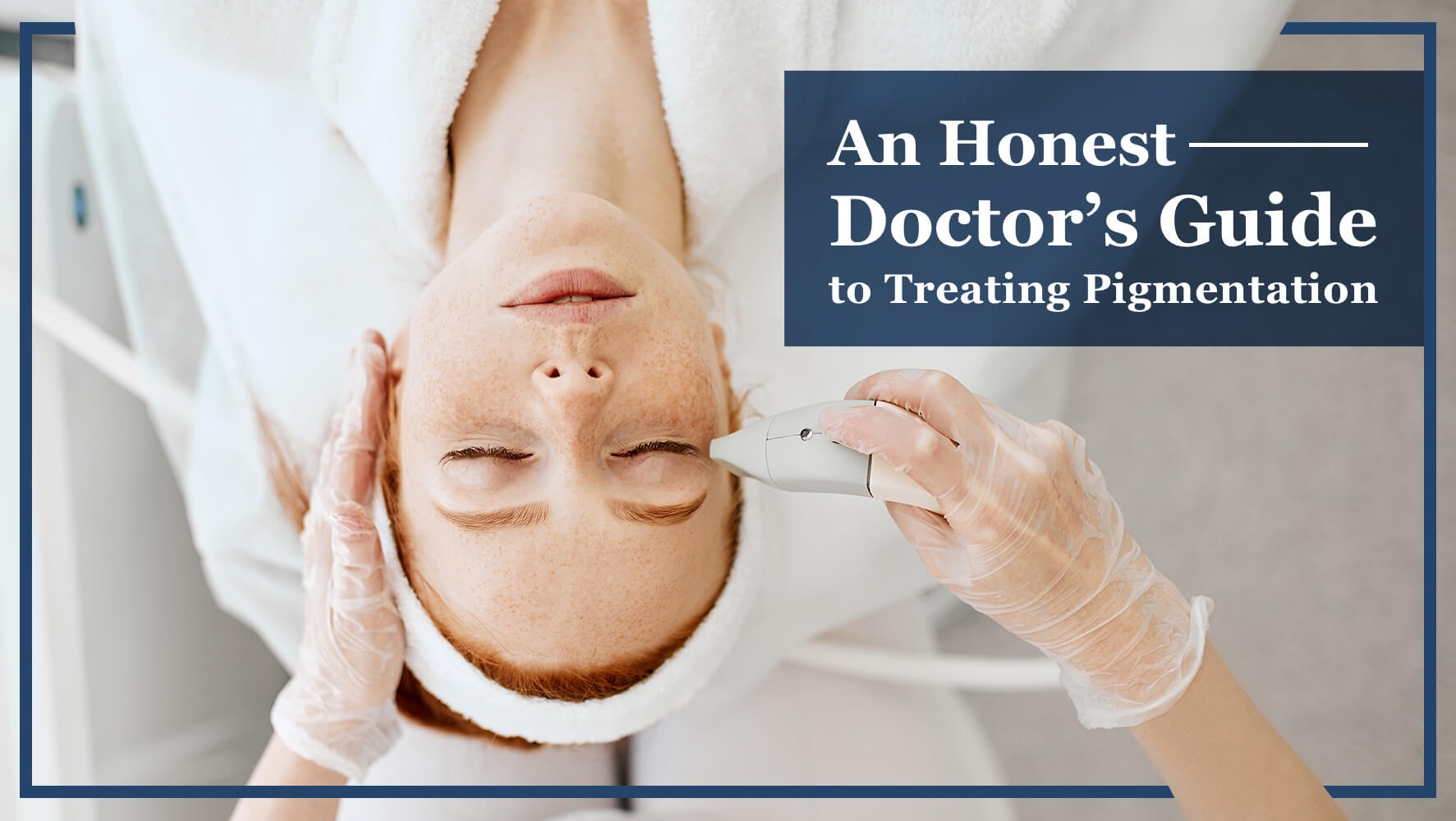
Many patients walk into the clinic specifically asking for the Pico laser to treat their pigmentation—largely influenced by its aggressive marketing and widespread brand recognition.
While the technology behind Pico lasers is proven, the reality is that it may not always be the most clinically appropriate choice depending on the type, depth, and cause of pigmentation.
Pigmentation is one of the most common skin concerns, particularly in Asia, where an even, radiant complexion is often associated with beauty and desirability. To address it effectively, we must first understand what pigmentation truly is—its underlying causes, how it develops, and why it varies from person to person. More importantly, can pigmentation be completely removed with treatment?
Here’s a deep dive into what really works, what doesn’t, and why a personalised approach matters.
While the technology behind Pico lasers is proven, the reality is that it may not always be the most clinically appropriate choice depending on the type, depth, and cause of pigmentation.
Pigmentation is one of the most common skin concerns, particularly in Asia, where an even, radiant complexion is often associated with beauty and desirability. To address it effectively, we must first understand what pigmentation truly is—its underlying causes, how it develops, and why it varies from person to person. More importantly, can pigmentation be completely removed with treatment?
Here’s a deep dive into what really works, what doesn’t, and why a personalised approach matters.
What Is Pigmentation And How Does It Form?
Pigmentation is caused by the production of melanin in our skin. The darker our skin colour, the more pigment/melanin there is in our skin. Melanin is produced in our skin by cells called melanocytes. These melanocytes contain melanosomes which produces and stores melanin.

Melanocytes are located between the epidermis and dermis layer (i.e. the first and second layer of our skin). Some of these melanosomes are transferred to skin cells called keratinocytes. The transfer of melanosomes, and therefore melanin, to the different layers of the skin will determine the type of pigmentation you have, and which pigmentation removal treatment in Singapore will be most effective for you.
Pigmentation Is Caused By A Few Factors:
Sun exposure results in an increase in melanocyte size and pigmentation formation.
Hormones, especially female hormones, play a part in pigmentation formation. (Fact: Women are 3 times more likely to suffer from pigmentation than men. It is more common in women during or after pregnancy, or after menopause.)
Genetic – A family history of pigmentation also increases the chances of developing these issues. The most common genetic conditions would be freckles or sun spots. There are also birthmarks – i.e. pigmentation present at birth.
Some medical conditions and medications may also cause pigmentation formation, or increased sensitivity to it.
Sun exposure results in an increase in melanocyte size and pigmentation formation.
Hormones, especially female hormones, play a part in pigmentation formation. (Fact: Women are 3 times more likely to suffer from pigmentation than men. It is more common in women during or after pregnancy, or after menopause.)
Genetic – A family history of pigmentation also increases the chances of developing these issues. The most common genetic conditions would be freckles or sun spots. There are also birthmarks – i.e. pigmentation present at birth.
Some medical conditions and medications may also cause pigmentation formation, or increased sensitivity to it.
What Type of Pigmentation Do I Have?
In general, there are two main categories of pigmentation: epidermal (first layer of the skin) and dermal (second layer) pigmentation. From a layman’s perspective, we can identify most of them by the naked eye upon close-up examination.
Epidermal pigmentations are usually more distinct, darker in colour, and the borders/edges of the spots are defined and can be seen clearly.
Epidermal & Dermal Pigmentation
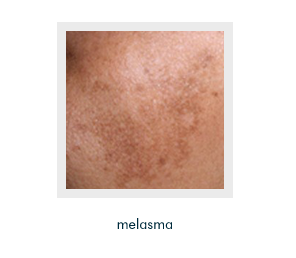
Epidermal Superfical Pigmentation

We can further classify epidermal pigmentation as superficial epidermal pigments (on the surface of the skin) and intraepidermal pigments (inside the first layer of the skin). This is because treatments for these two types are different.
Dermal (Deep) Pigmentation

Dermal pigmentations (deeper) usually appear as slightly blurry, hazy patches on the skin. This type of colouration is typically lighter, and the borders/edges of the spots are less clear than epidermal pigmentation.
At Mizu, we also utilise a computerised software with the VISIA machine to identify the type of spots and the depth of the pigmentation in the skin. This allows the doctor to further confirm the diagnosis and choose the most appropriate treatment for different conditions, as well as to monitor progress over subsequent visits.
The Best Way For Pigmentation Removal:
Combination Treatment (S)
Most pigmentation can be effectively treated with a combination of topical creams and laser treatments, and sometimes oral medication. The most important part is to prevent them from returning and to prevent any undesired side effects.
Identifying the type of spot you have is the most crucial step in the pigmentation removal and treatment process, as it determines the type of medication, creams, and lasers that will be effective for you.
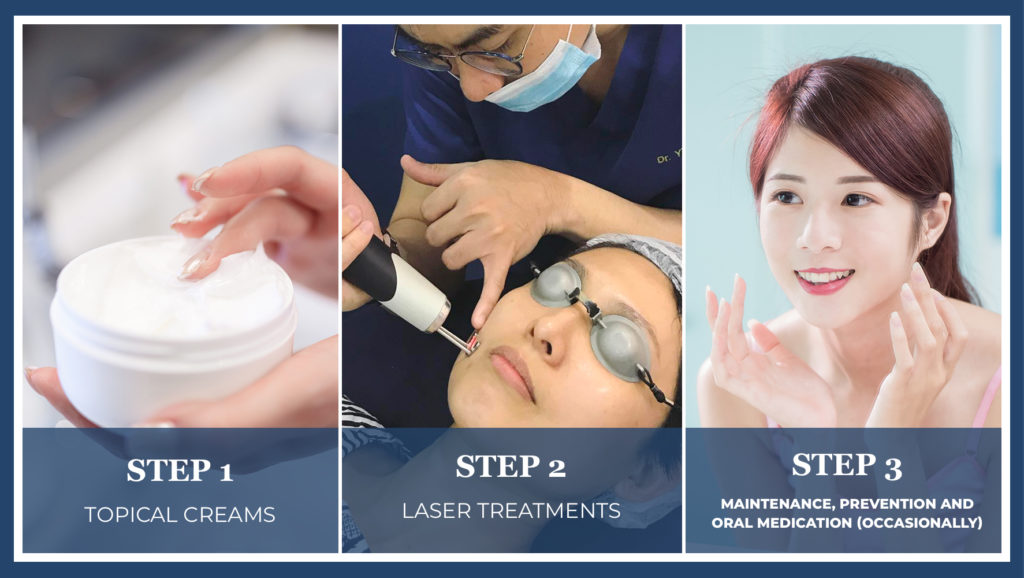
The most common topical cream we prescribe at Mizu for pigmentation removal is a custom-formulated Hydroquinone-based cream.
Hydroquinone is a mainstay in skin pigmentation treatment and it works by blocking the production of melanin in the skin. Hydroquinone is known by some as a ‘bleaching cream’. It may sound scary, but on the contrary, it does not bleach the skin and also does not remove pigmentation. Instead, hydroquinone lightens it by reducing the amount of pigments (melanin) being produced by the skin.
For some conditions, especially epidermal pigmentations, it may be recommended to start on a course of hydroquinone for 2-4 weeks before any laser treatments, as this can help to decrease the chances of any spots reoccurring. Hydroquinone as a stand-alone treatment may not remove pigmentation as effectively as a combination treatment. Hydroquinone is usually used for 3-6 months, and no more than that, as it may cause side effects.

A steroid cream is also sometimes used in conjunction with laser treatments. This is used to prevent Post-inflammatory Hyperpigmentation (PIH) which can happen with some laser treatments when there is scabbing of the skin involved. A steroid cream is usually used for 1 week post-laser treatments.
In recent years, the quickest and most effective way to treat and remove pigmentation is by laser treatments. Laser technologies are constantly evolving, but that doesn’t mean that older technologies are no longer as effective. We have several types of laser machines in Mizu that we use for different types of spots. They are the Pico laser, Yellow laser, Ruby laser, and the Q-switched laser.
I started my career doing plenty of lasers and learning their quirks and capabilities – and over time, I chose these four stalwarts to maximise the efficacies of my treatment. As a trainer for the Pico, Ruby and Yellow lasers, I selected the different lasers according to the different pigmentation conditions and the depths the lasers can reach. Sometimes, I incorporate different lasers for a course of treatment, as both epidermal and dermal pigmentations can both be present simultaneously.
The reason for choosing the different laser types is because they provide different wavelengths of laser energy to target the different pigmentation situated in the various skin layers.
Q-Switched Laser:


Q-Switched Laser:
At 1064nm wavelength, the Q-switched laser is most suited to target dermal pigmentations. The Q-switched laser has been a mainstay in the aesthetics industry for many years. At Mizu, the Q-switched laser is still frequently used as it helps to rejuvenate the skin (with heat energy) while removing pigmentation at the same time. The Q-switched laser is effective in reducing brown acne marks as it not only fades pigments, it also treats and reduces acne and pore size. Read more about the Q-switched laser here.
As a maintenance treatment, the Q-switched laser is also often used to prevent pigmentation from reappearing after treatment.
Yellow Laser:
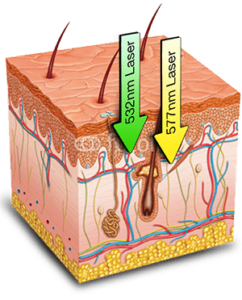
At 577nm wavelength, the Yellow laser is particularly useful for epidermal pigmentation such as superficial freckles, some sun spots, age spots, and stubborn conditions such as vascular melasma. Vascular melasma is a multi-layer pigmentation condition that results from an increase in blood vessels under the skin. These blood vessels are reduced with the Yellow laser which, in turn, reduces pigmentation.
Like the Q-switched laser, the Yellow laser is versatile. It can be used for a variety of conditions such as melasma, sun/age spots, freckles, facial flushing, acne, post-acne redness, skin rejuvenation and brightening. The Yellow laser’s energy is absorbed by both pigmentation and the underlying blood vessels. This results in the breakdown of pigmentation and at the same time, reduces the blood supply to the skin cells that produce these pigments. Not only is this an effective pigmentation removal treatment in Singapore, but it also prevents these skin cells from producing pigments and ensures longer-lasting results.

Pico Laser:
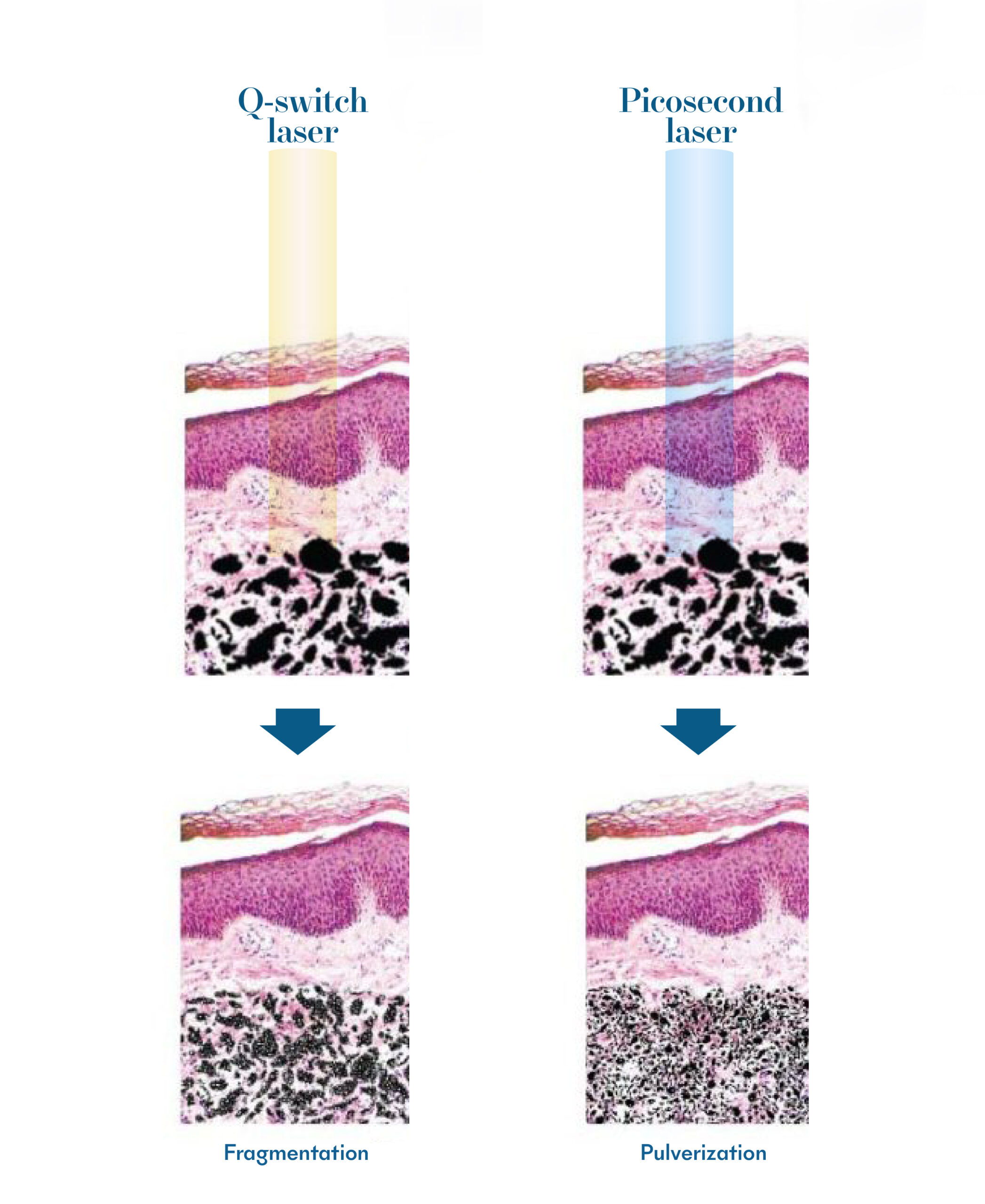

Pico Laser:
The Pico comes in 3 different wavelengths – 532nm, 1064nm and 694nm wavelength. Each wavelength is used to target different pigmentations at different layers of the skin, therefore removing pigmentation effectively and quickly. It is also often used for tattoo removal.
Pico-second is a measure of time. 1000 pico-seconds = 1 nano-second. The pico laser delivers ultrashort picosecond pulses, compared to the longer nanosecond pulses. The pulse duration (how much time one laser shot stays on the skin) of a picosecond laser is 100 times shorter, allowing more shots to be delivered in the same amount of time. This means the skin heats up less, which may reduce the risk of hyperpigmentation sometimes associated with laser procedures.
Ruby Laser:
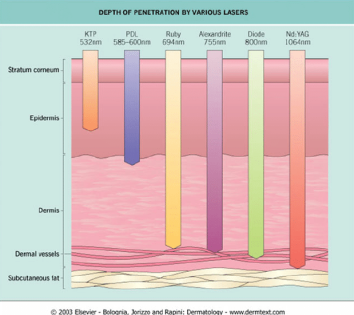
The Ruby laser, at 694nm wavelength, is used to treat epidermal pigmentation, such as freckles, sun spots, lentigos, and age spots, as well as some dermal pigmentation such as melasma.
Clinical studies suggest that pigmented lesions in Asian skin should be treated with high energy densities, making the ruby laser a suitable treatment. The ruby laser can effectively reduce pigmentation with fewer side effects due to its high absorption rate by melanin and low absorption rate by other skin components.
As one of the few clinics in Singapore to have a ruby laser, I have developed specific settings for the ruby laser, combined with components from the pico laser, unique to Mizu for treating specific pigmentation conditions.

Frequently Asked Questions
The Doctors

Dr Tan Ying Zhou, Medical Director
MBBS London
As a regional trainer for the Pico, Ruby and Yellow lasers, Dr YZ Tan has met and trained many doctors in the use of these lasers, as well as done over 30,000 laser treatments (and counting) over the span of his career.
Having treated various types of pigmentation issues, he has harnessed the capabilities of the lasers and is continuously improving and fine-tuning his laser treatments in search of the best way to remove pigmentation. Most of the patients he meets for the first time have the same common misconception about lasers, which is how this post came about!